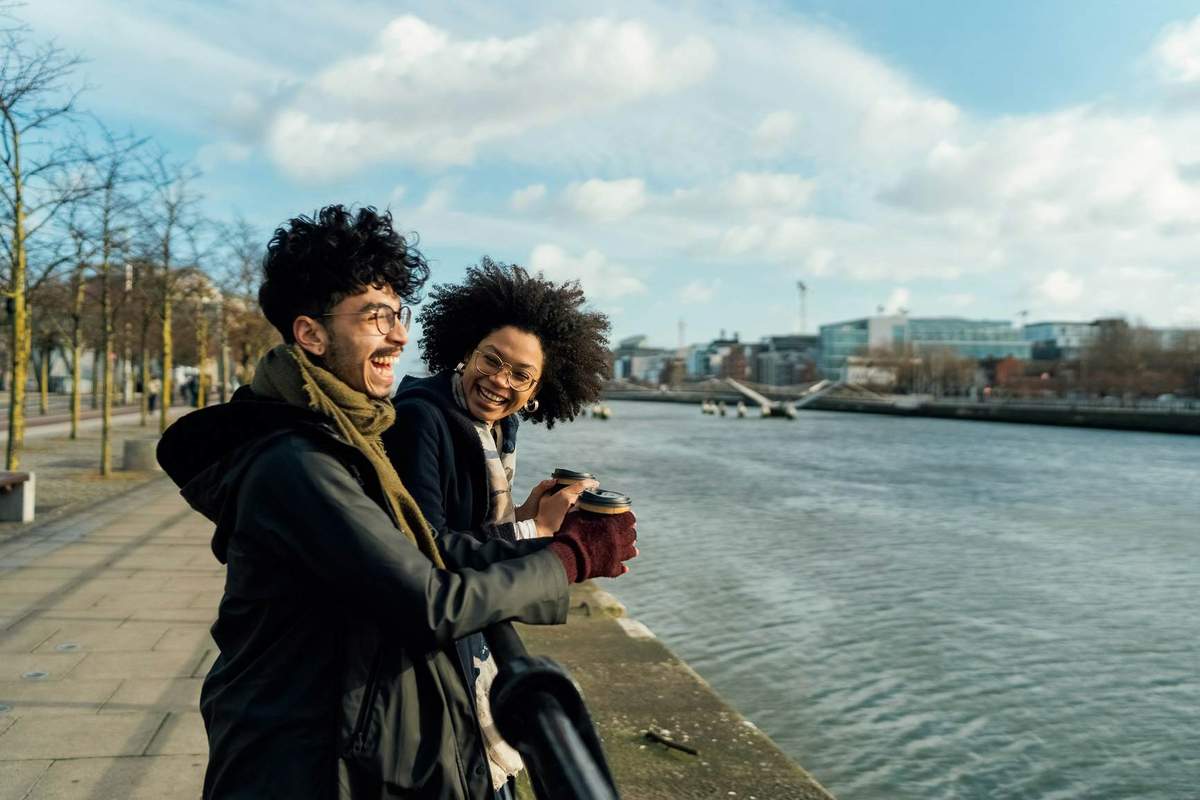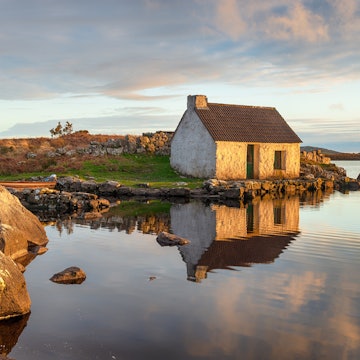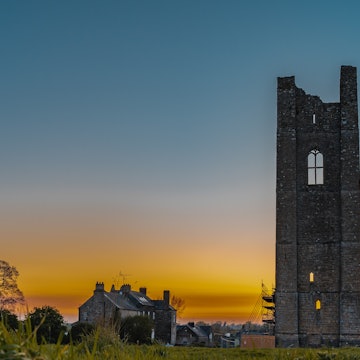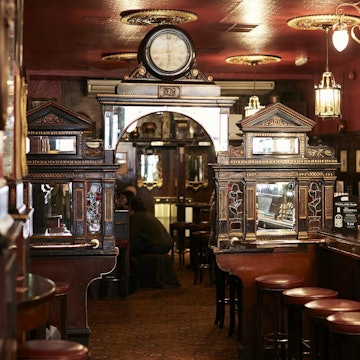

St Anne's Church, Shandon Tower and Bells. Slongy/Getty Images
The famous Corkonian pride is not misplaced. Combining the charm of a small town with the food and arts offerings of a much larger burg, Ireland’s second-largest city maintains a fiercely independent nature of its own. It takes just 3 hours to travel to Cork from Dublin, but you'll fall in love with it forever.
The compact city center is set on an island between two river channels and is home to one of the best food scenes in the country, helped in part by the famous English Market. Narrow streets are crammed with buzzing restaurants dishing up local fare, achingly cool cocktail bars and snug pubs with live music.
Wander the streets, soak up the atmosphere and follow your instincts; you won’t be too far away from a happily lost afternoon. Here are our top picks for the best things to do in Cork city.

1. Scout the stalls at the vibrant English Market
The English Market – so called because it was set up in 1788 by the Protestant, or "English," corporation that controlled the city (there was once an Irish Market nearby) – is a true gem, with ornate vaulted ceilings, columns and a polished marble fountain. Vendors set up scores of colorful and photogenic displays of the region’s best local produce, meat, fish, fruit, cheese and takeaway food.
Planning tip: The unmissable Farmgate Café, perched on a balcony overlooking the food stalls, places all those fresh local goods right on your plate – from crab and oysters to the lamb in your Irish stew. Go up the stairs and turn left for table service or right for counter service.
2. Honor a community hero
The part of the city south of the river and east of the Gothic St Fin Barre’s Cathedral and the 17th-century ramparts of Elizabeth Fort is changing fast, as restoration and gentrification take hold. Seek out the renovated redbrick Nano Nagle Place, a former convent that houses an award-winning museum dedicated to Honora Nagle, a remarkable 18th-century woman who devoted herself to providing education for poor children in Cork.
Planning tip: Beyond the museum is an oasis of terraced gardens and the ideal lunch spot, the Good Day Deli.
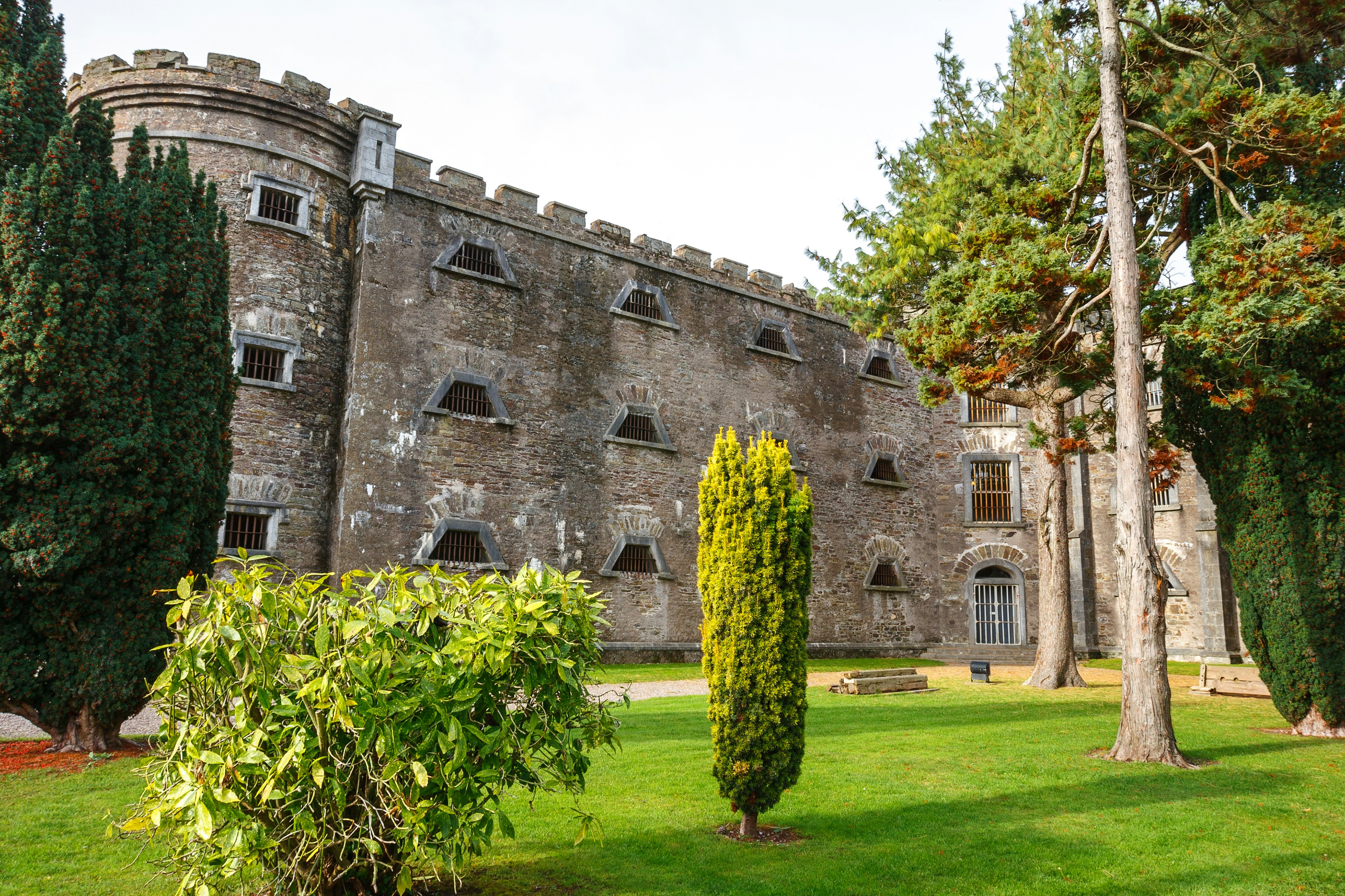
3. Unlock the history of a Victorian prison
The imposing Cork City Gaol is well worth a visit, if only to get a sense of how awful life was for prisoners over a century ago. An audio tour guides you around restored prison cells that feature models of suffering prisoners and sadistic-looking guards, bringing home the harshness of the 19th-century penal system. The most common crime was poverty itself; many of the inmates were sentenced to hard labor for stealing loaves of bread. The prison closed in 1923, reopening in 1927 as a radio station that operated until the 1950s.
Planning tip: Make time for the on-site Governor’s House, which has been converted into the Radio Museum. Alongside the collection of beautiful old radios, you can hear the story of radio pioneer Guglielmo Marconi’s conquest of the airwaves.
4. Explore the Marina Market
Opened in 2020, the Marina Market quickly became one of the city’s favorite hangouts. The hangarlike space is lined with artisan food and drink stalls and has a central seating area of tables and chairs and even some comfortable leather sofas. Try Alchemy for coffee, Oak Fire for pizza and Nua Asador for barbecue (all of its meat comes from the English Market). The venue is open daily from 8am–8pm but really comes to life on the weekends, when it hosts a crafts and farmers market.
Planning tip: The market is a 1.7km walk from the English Market in the city center, but you can also catch bus 212 from the main Cork (Kent) train station.

5. Stroll the university grounds
Established in 1845 as one of three Queen’s Colleges (the others are in Galway and Belfast), the campus of University College Cork spreads around an attractive collection of gardens and Victorian Gothic buildings, including a 19th-century astronomical observatory. Self-guided audio tours are available from the visitors center. The covered walkway on the north side of the main quad, known as the Stone Corridor, houses Ireland’s biggest collection of Ogham stones, carved with runic inscriptions dating from the 4th–6th century CE.
Planning tip: In the northeast corner of the campus is the award-winning Glucksman gallery, a startling construction of limestone, steel and timber built in 2004 by Dublin architects O’Donnell and Tuomey. Three floors of galleries display national and international contemporary art and large-scale, mixed-media installations.
6. Savor Cork’s food scene
Cork is a city where you will definitely not go hungry. Dozens of restaurants and cafes make the most of the county’s local produce, from the Quay Co-op, which is known for its inclusive atmosphere and organic, vegetarian eats, to Ichigo Ichie, which immerses diners in Japanese cuisine and the theater of kappo (a traditional dining practice involving multicourse meals at a counter). Bonner Travel offers a sampling in its 3-hour Cork Culinary Tour (available Monday through Saturday, minimum four people), which explores the city’s markets and eating places, including tasting sessions, and ends with either a pint in a traditional pub or coffee and cake at an artisan coffee shop.
Planning tip: Visit in August to experience the Cork on a Fork food festival, with tours, master classes, cooking demos, community events and farmers markets.

7. Climb up to the Shandon cultural quarter
Shandon, perched on a hillside overlooking the city center to the north, is a great spot for city views, but you’ll also find galleries, antique shops and cafes along its lanes. Tiny old row houses, where generations of workers raised huge families in basic conditions, are now sought-after urban pieds-à-terre. Walk up until you reach a large circular building, known as the Firkin Crane (a firkin is a wooden barrel, and a crane is a weighing device). Built in 1855, this is where Cork’s butter was weighed and packed for export (it now houses a dance center). Go around to the right until you see the neoclassical columns that adorn the facade of the Old Butter Market. Cork had the largest butter market in the world during the 1860s, and the trade’s history is told through the displays and dioramas of the Cork Butter Museum next door.
Planning tip: Shandon is dominated by St Anne’s Church, also called the Four-Faced Liar because each of the tower’s four clocks used to tell a slightly different time. Wannabe campanologists can ring the Shandon Bells on the 1st floor of the Italianate clock tower, then continue up 132 steps to the top for 360-degree views of the city.

8. Take a day trip to the harbor town of Kinsale
The yachting harbor of Kinsale, 25km south of Cork city, is one of many strung along the coastline of County Cork. Narrow, winding streets lined with galleries, gift shops, lively bars and superb restaurants sit beside a handsome natural harbor guarded by a huge 17th-century fortress. Stop for lunch, or take a boat trip on the harbor (try Kinsale Harbour Cruises) or even an excellent walking tour of the town.
Planning tip: There are lots of great shops to bookmark, including Granny’s Bottom Drawer for Irish linen, woollens, leather goods and vintage-style home wares; the Giles Norman gallery for evocative black-and-white landscape photographs; and Prim’s Bookshop for a treasure trove of interesting titles.





